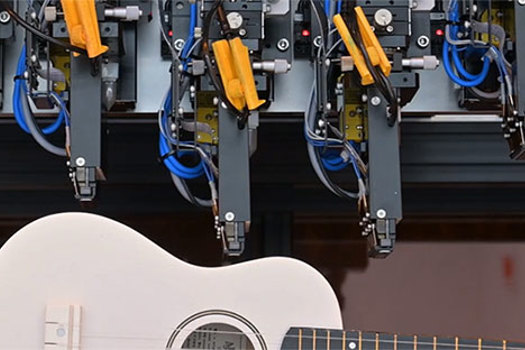Chief executive Malcolm Davis signed a letter of intent on the Landa stand (A73, Hall 9) after being blown away by Benny Landa’s technology demonstration.
"It was quite clear within the first five minutes of a half-hour demonstration that this technology will change everything as far as print is concerned," said Davis.
"The makeready is fast. It’ll print up to 12,000 per hour single or 8,000 per hour duplex; it gives you variable data and the quality is far better than digital or litho."
Despite being a company that has always kept at the forefront of technology – Lexon bought the UK’s first Truepress 2500 at the last Drupa – Davis is not the type to just follow the latest trend.
His enthusiasm for Landa’s nano technology is in marked contrast to his reaction to the digital revolution in 2008 at what became known as the 'inkjet Drupa' – Lexon’s Truepress purchase notwithstanding.
"We went to Drupa 2008 and everybody was clearly telling us, 'This exhibition is the death of litho; digital is born, it’s the way forward and everything’s going to be digital'," said Davis.
"I spent two-and-a-half days there and when we left I thought: 'Forget it, litho is still king and I’m not the least bit bothered about [digital]'. As far as I’m concerned digital is slow, it’s costly and the quality is fair-to-middling.
"Don’t get me wrong, digital is good – we’ve got it because it fills a market – but it’s got its limits and quite frankly, I can’t get excited about it. But when we saw the nano press I thought, 'This technology is really going to challenge litho on everything.'"
Davis, who comes from an engineering background, added that the design of the Landa presses, which allows easy access to the machine’s guts, was a big advantage.
"With a litho press you’re forever crawling in the guard and crawling underneath the bottom, you’ve got to be a little monkey to get in there half the time. But with this thing, the whole front of the machine lifts up on hydraulic rams and you can look right inside the machine and stick your hand in. It’s so easy," he said.
"The other thing is that all the inks are water-based, which fits in perfectly with our environmental policy. Even to the extent that the ink containers are plastic and you chuck those in with your water containers in the recycle bin.
"It uses standard paper and the ink goes on dry, so you don’t have the problems you get with some digital presses where the dryer is so hot that the paper comes out like matchsticks."
Lexon Group, which has two manufacturing sites in South Wales, runs a range of litho, digital and screen presses, including two Komori and one Heidelberg press, expects to take delivery of its Landa press in late 2013 or early 2014.
Davis added that he was convinced that nanographic printing would be the "next big thing" after letterpress, litho and then digital, and said that he was unconvinced by the array of B2 inkjet presses being launched at Drupa.
"The B2 inkjet devices are only running a few thousand an hour and we’re just not in that market," he said. "It’s alright if you got a 500 job on and off, but most of our runs vary between 250 and 250,000 and 250,000 on a digital press is totally nuts.
"It would cost you an arm and a leg and take you two weeks and as far as I’m concerned the quality isn’t there. It almost seems to me that Drupa 2012 is the death of litho and the birth of nano. I’ve got quite a bit of confidence in this one. Digital didn’t grab me, but this one does."
Tweet









